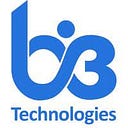Snowflake Single Sign-On Using Azure AD
In this blog, you’ll learn how to integrate Snowflake with Azure Active Directory (Azure AD). When you integrate Snowflake with Azure AD, you can:
- Control in Azure AD who has access to Snowflake.
- Enable your users to be automatically signed in to Snowflake with their Azure AD accounts.
- Manage your accounts in one central location — the Azure portal.
Prerequisites
To configure Azure AD integration with Snowflake, you need the following items:
- An Azure AD subscription.
- Snowflake single sign-on enabled subscription
Register an Application in the Azure Portal
- Go to Azure Portal > Enterprises Application
2. After landing on the overview page, click New application, which will redirect you to a new page where you can click Non-Gallery Application.
3. It will prompt you to give your application a name. Once you’ve decided on a name, click add button on the same page.
I’ll call my programme ‘Snowflake Single Sign-On’ in this example.
4. Once the application is created, it looks like
5. Click Single Sign-On button
6. Now choose ‘SAML’, the page looks like below
7. Click the Edit button on BASIC SAML CONFIGURATION and fill in the appropriate fields as shown in the figure below.
8. In the remaining part, there is no need to make any changes. Simply leave it as is, and then click the Test button once you’ve finished configuring everything.
9. Login to snowflake using admin credentials
10. To create a new user in Snowflake, use the queries below.
Note: Make sure the user has access to the Azure portal
CREATE OR REPLACE USER BOOPATHIRAJ_DHANARAJ
LOGIN_NAME = ‘boopathiraj.dhanaraj@bi3technologies.com’
DISPLAY_NAME = ‘BOOPATHIRAJ DHANARAJ’
MUST_CHANGE_PASSWORD = FALSE;11. You can now sign out of the Admin user and sign in with Azure AD.
Since you’ve now been walked through creating a custom SAML connection with AZURE AD.
Conclusion
There are a number of different ways to integrate your existing authentication strategies with Snowflake. The strategy your enterprise should choose largely depends on what your existing workflows are and what tooling you have available.
We recommend using OAuth 2.0 with OIDC if you have both options available. SAML is easier to set up and gives more flexibility.
When it comes to user management, you will need to set up SCIM for an automated workflow.
If SCIM isn’t available, you can use a free solution like Tram to help consolidate, govern, and audit the changes to your Snowflake environment in a consistent manner.
About Us
Bi3 has been recognized for being one of the fastest-growing companies in Australia. Our team has delivered substantial and complex projects for some of the largest organizations around the globe and we’re quickly building a brand that is well known for superior delivery.
Website : https://bi3technologies.com/
Follow us on,
LinkedIn : https://www.linkedin.com/company/bi3technologies
Instagram : https://www.instagram.com/bi3technologies/
Twitter : https://twitter.com/Bi3Technologies

